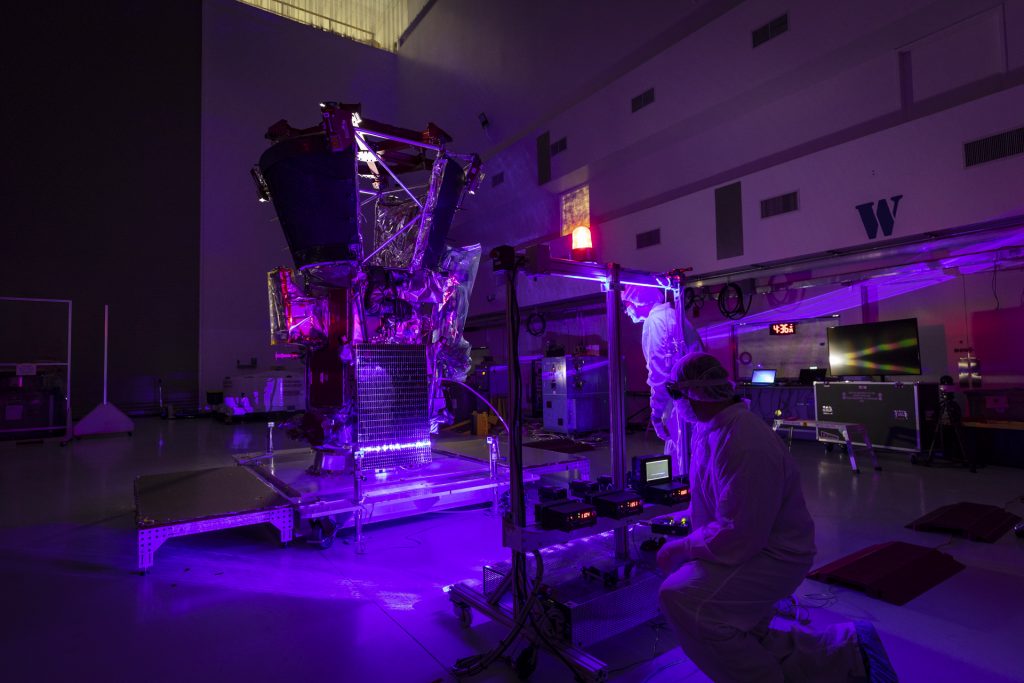
“Now I know how my mother felt when she dropped me off at college,” says J. Felipe Ruiz, referring to the bittersweet experience of watching his “baby” (in his case, spacecraft) leave the nest.
In late July 2018, he and his team at Cape Canaveral Air Force Station in Florida loaded the heat shield and solar array cooling system they had spent four years designing, building, and testing into the Parker Solar Probe, which then was placed into the spacecraft. “Once it’s loaded, we’re hands off and won’t see it again,” says Ruiz, a mechanical engineer with the Johns Hopkins University Applied Physics Laboratory’s Space Exploration Sector.
Like a nervous father after freshman orientation, Ruiz hopes all the hard work will pay off on the historic, 60-years-in-the-making mission to “touch” the biggest star in the solar system. The Parker Solar Probe, launched on August 12, 2018, will orbit the sun’s outer atmosphere 24 times to collect groundbreaking data on its corona, solar wind, and the physics of stars. The heat shield and cooling components should allow the probe to orbit within 4 million miles of the sun’s surface without burning up.
In May, Ruiz will graduate with a master’s degree in space systems engineering from Johns Hopkins, through the Whiting School’s Engineering for Professionals program. He had originally planned to attend graduate school just after he completed his bachelor’s in mechanical engineering from the University of Texas at Austin. Then, APL called. “It’s hard to turn down an offer to come build a spacecraft,” he says.
Since EP is designed for working professionals, Ruiz can embrace both dreams. “EP’s flexibility allows me to do what I need to do for my job and still take classes,” he explains of his evening and weekend course schedule, with classes taken both in person and online. “When I was in Florida, I did my homework and talked to my class group to keep our projects going. My classes tie back to my work, so I get to implement what I am learning the next day at work.”
Some of his instructors have been his APL co-workers, including Gordon Maahs, senior mechanical engineer, who co-teaches Systems Engineering for the EP program: “Working professionals like Felipe bring their own perspective to the class, which helps to give students a sense of how it really works,” says Maahs. “There’s a practical aspect that you can’t get from theory.”
It’s a lesson not lost on recent “empty nester” Ruiz. “Building a satellite is very specific work, and there’s no instruction booklet,” he says. “EP has given me all the tools I need to build my solution from scratch.”




